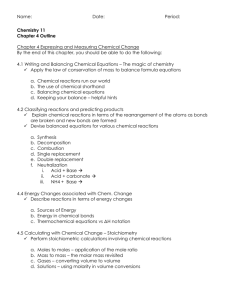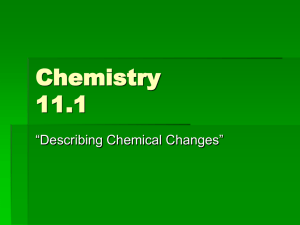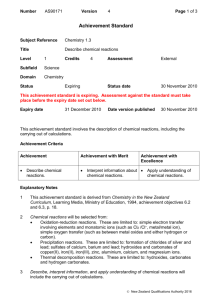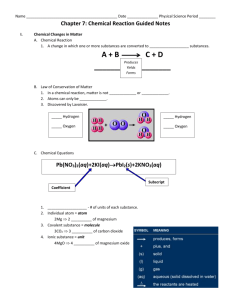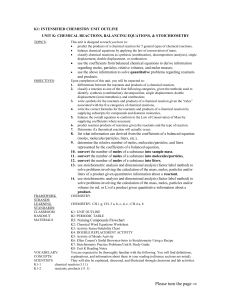Chemistry 11 Study Guide for Chemical Reactions Quiz
advertisement
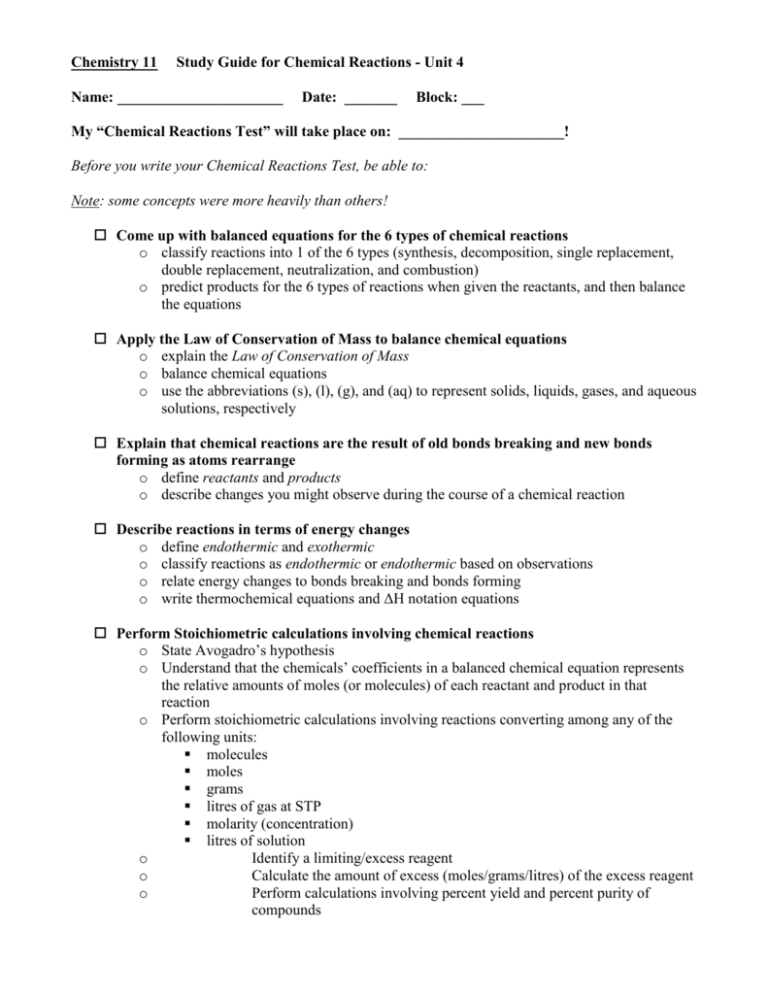
Chemistry 11 Study Guide for Chemical Reactions - Unit 4 Name: ______________________ Date: _______ Block: ___ My “Chemical Reactions Test” will take place on: ______________________! Before you write your Chemical Reactions Test, be able to: Note: some concepts were more heavily than others! Come up with balanced equations for the 6 types of chemical reactions o classify reactions into 1 of the 6 types (synthesis, decomposition, single replacement, double replacement, neutralization, and combustion) o predict products for the 6 types of reactions when given the reactants, and then balance the equations Apply the Law of Conservation of Mass to balance chemical equations o explain the Law of Conservation of Mass o balance chemical equations o use the abbreviations (s), (l), (g), and (aq) to represent solids, liquids, gases, and aqueous solutions, respectively Explain that chemical reactions are the result of old bonds breaking and new bonds forming as atoms rearrange o define reactants and products o describe changes you might observe during the course of a chemical reaction Describe reactions in terms of energy changes o define endothermic and exothermic o classify reactions as endothermic or endothermic based on observations o relate energy changes to bonds breaking and bonds forming o write thermochemical equations and ΔH notation equations Perform Stoichiometric calculations involving chemical reactions o State Avogadro’s hypothesis o Understand that the chemicals’ coefficients in a balanced chemical equation represents the relative amounts of moles (or molecules) of each reactant and product in that reaction o Perform stoichiometric calculations involving reactions converting among any of the following units: molecules moles grams litres of gas at STP molarity (concentration) litres of solution o Identify a limiting/excess reagent o Calculate the amount of excess (moles/grams/litres) of the excess reagent o Perform calculations involving percent yield and percent purity of compounds
